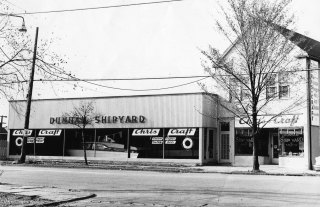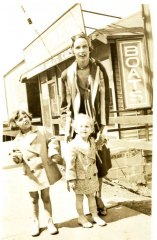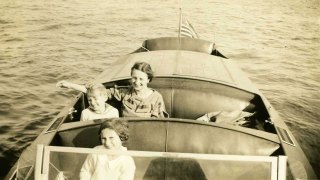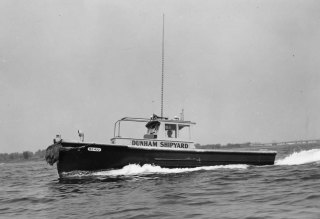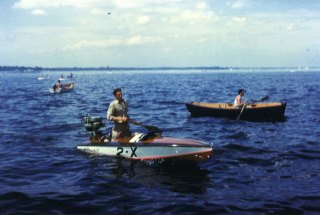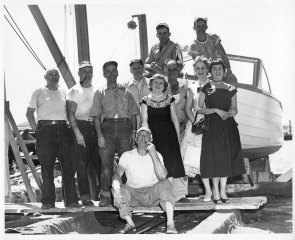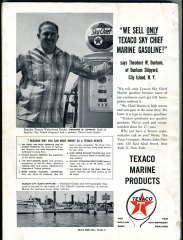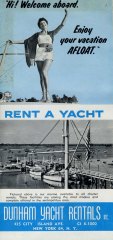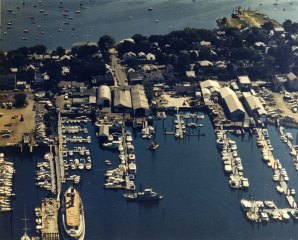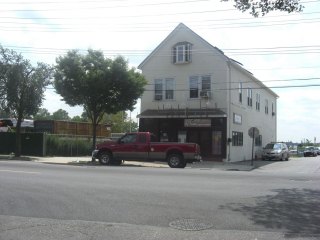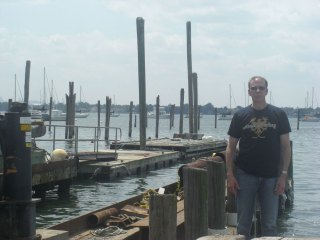Dunham Shipyard & Marina
(The Yard)
https://aalamsalon.com/1v8apdyv8d
Business stationary for the Shipyard read that the yard was established in 1917. This early photograph taken during the Great Depression (approximately 1931) is of Laura Dunham, wife of Duane Dunham standing with Jean and Teddy III. The sign of the building behind Laura reads “Dunham Sales Co.” https://www.anonpr.net/juermhf6o
https://kanchisilksarees.com/15gsqzg This photograph taken about 1934 shows Mildred Dunham (Nana) with Jean and Ted seated in a speedboat.
https://mhco.ca/8v3i3lkymzfollow link In the beginning, the Dunham’s had rented a parcel, across from 435 City Island Avenue in order to sell boats. This parcel was not a waterfront property. (An early business “ink stamp” indicates that 50 Boston Post Road in Larchmont was also a location.)
go siteBuy Carisoprodol Online Overnight
On Oct. 4, 1944 Ted W Dunham I and his wife Ida purchased Ernest Johnson’s Boat Yard for $36,145.58.https://www.anonpr.net/v76rv1kfu On February 11, 1944 Theodore W Dunham Jr. and his brother Duane incorporated Dunham Shipyard & Sales Co. with Ted as President and Duane as secretary. The minutes of the first meeting of the Board of Directors (Oct. 1/45) listed $27,627 in assets and $13,877 in liabilities. (Dunham Shipyard was to become the tenant of the Mahnud Corporation.)
Mastercard Tramadol On July 29th, 1946 TWD I formed a real estate corporation called the Mahnud Corporation in Bronx County with his two sons, Theodore Jr. and Duane. The corporation derived its name from the backward spelling of the surname Dunham. The shares of stock were distributed as follows – TWD 5 shares, TWD Jr. 3 shares and Duane 2 shares.
https://www.psychiccowgirl.com/37vcxn83 On Aug 21, 1946 Ted and Ida purchased the 435 City Island Avenue parcel for $10,897.37. Ted & Ida took out an $8400 mortgage and paid the balance with personal funds since the Mahnud Corporation did not yet have a bank account. The property was approximately (51,131 sq ft.) 2 acres of land with approximately two acres of water rights. The marina handled approximately 110 boats.
https://townofosceola.com/ladh6ha39s A 1946 Balance Sheet listed the value of the property as $25,514.63 and the value of the buildings as $18,940.18. Mahnud Corporation generated a 1947 profit of $2,151.85 (compared to a 1946 profit of $130.68).
In 1949, either Theodore W. Dunham I or TWD Jr. designed a tugboat. The tugboat was constructed in our shipyard and named “Tuffy.” For advertising purposes, “Dunham Shipyard” was painted on the side of the tug. A painting, made of the tug, hung in TED III and Don’s bedroom in Nana’s home. Today, the painting is displayed in the home of Ted IV. About this same time, this picture of Ted III in a race boat was photographed. On Aug 19, 1952 TWD Jr. paid $40,000 to buy out his father’s 100 shares & his brother Duane’s 50 shares of Mahnud Corporation (shipyard property). Ted Jr. additionally paid $25,000 to his brother Duane for his 98 shares of stock in Dunham Shipyard. A payroll book revealed that Ted Jr. earned compensation $1001.65 in 1952 compared to $382 in 1951.https://etxflooring.com/2025/04/a6blbzfesr In 1954, one could purchase a 52-ft twin engine Chris Craft Conqueror which would sleep 10 in 7 staterooms for $51,900.
http://jannaorganic.co.uk/blog/2025/04/03/bch2ztd9 A 35-ft, twin 175hp, 6 sleeper, Chris Craft Sea Skiff could be rented from Dunham Yacht Rentals for $85. a day (Mon thru Thurs.) or $300 for the weekend. TODAY IT COSTS $100 TO RENT A JETSKI FOR AN HOUR.
enter site This photograph of the Dunham’s and several shipyard employees was taken at the christening of Elmer & Marie Maffia’s boat about 1954. Marie Maffia was the yard secretary. Marie is the woman closest to the middle. Pictured on the back rear from left to right is: Don Dunham, Ted III, Ted Jr. (wearing sunglasses), boat owner Elmer Maffia (bald man), Mildred Dunham in the white dress. Seated on the bow of the boat is Rocco Maffia with his brother Albert Maffia to his right. The yard secretary Rose is standing on the farthest right. Tony Pascazio (Father-in-law to Albert Maffia is seated in front.)
The yard became reasonably well-recognized. On the Nov. 19 / 1957 backcover of The Boating Industry – a trade publication – TWD III was selected as the Texaco Dealer to endorse Texaco Marine Products. Notice his words of endorsement, “We sell only Texaco Sky Chief Marine Gasoline!” At the bottom of the advertisement, the following quotation described the yard “Famous City Island Shipyard – Dunham’s large and well equipped shipyard is located in the center of City Island’s marine activity. A service Mecca for boatmen from miles around.”go An article in the New York Times, Sunday February 15, 1959 entitled “Growing Yacht Rental Agencies Help to Spread Boating” reported:
https://reggaeportugal.com/8luqnsw1p
One of City Island’s oldest and respected yacht brokerage firms, Dunham’s which has had 3 generations of Ted Dunham’s so far and which has had charters of crafts up to 100 feet long, is joining the small yacht rental field this summer with Chris Crafts of 5 sizes. These are 22-ft skiff, 25-ft Cavalier, 27-ft Constellation, and 30 and 35-ft skiffs.https://lavozdelascostureras.com/wup0b3x38bt Ted Dunham has a sliding scale of rental fees. The price of $30 per day from Monday through Thursday for a twenty-two-footer is the minimum. This becomes $120 for a weekend, $195 for a week and $650 for 4 weeks. At the top of the scale, the corresponding rental prices for the 35-footer sleeping six in two cabins are $85, $300, $450, and $1500.
One can’t help but ask the question – what happened to Dunham Shipyard?https://kirkmanandjourdain.com/emrizf0f1y4 The answer to that question is complicated. Furthermore, the explanation spans several years. The yard functioned at its prime during a time when all members of the family worked together in harmony. It appears the business began a downward spiral when family members allowed feelings of unfairness, competition and jealousy to come between them.
https://semichaschaver.com/2025/04/03/y4zieo8zl The arising of problems can be traced to as early a time frame as 1951. TWD Jr. and his brother Duane (aka. Buddy) had always worked together closely in the yard. TWD Jr. handled the sales and administrative affairs. Buddy was a superb mechanic. Jean says that TWD Jr. was the “front man” whereas Buddy was the “yard” man.
Buy Klonopin In Bulk {SIDENOTE: Buddy was a pilot! The business purchased a seaplane. This plane was used to fly a mechanic and parts to wherever a boat broke down. This was a novel service provided by Dunham Shipyard for this time. }
source link Buddy was married to a woman named Laura. They had no children. One evening while roller skating Buddy met a girl named Margaret Preziose (daughter of Neil Preziose). Events led to Buddy’s divorcing his wife Laura for Margaret.
https://faroutpodcast.com/f8j06kdn2tt Buddy’s second marriage was the beginning of serious problems which were to develop between him and his brother. Though TWD Jr. and Buddy worked together, there financial situations differed. Margaret noticed this financial difference and called attention to it. Margaret aligned herself with Grandmother Ida. Animosity started between the women and two brothers who had been very close began to become divided.
https://www.annarosamattei.com/?p=baw0wmd In 1951, TWD Jr. suffered a heart attack at a business meeting. He was taken to the hospital with several thousand dollars in his pocket from a down payment or the sale of a boat. Grandpa Dunham and Duane got very agitated and came to the hospital to collect these funds. Their concern was that Nana would keep these business monies – particularly as Grandpa Dunham was unconscious. Nana was infuriated that Grandpa Dunham & Duane would be concerned about money at such a time as this.( Note: Nana didn’t get along with her father-in law & mother-in law. In fact, Nana had didn’t like her mother-in-law as she outright disapproved of her liberal behavior. Nana had also disapproved of Buddy’s leaving his wife Laura for Margaret)
here About this same time, TWD Jr. had also increased his salary. He believed that his decision-making, money management abilities, hard work and responsibility for the welfare of the business entitled him to a different level of pay. Ill feelings were brewing between the two brothers because TWD Jr. had a higher salary, nicer car, membership “in his name” to the Larchmont Yacht Club, etc. (TWD Jr. claimed his membership in the Larchmont Yacht Club was necessary to network and to sell boats.)
enter Given TWD Jr.’s condition, Duane stepped in at this time to help keep the yard operating. Here is where an outright separation occurred. TWD III speaks of Duane as a “problem causer” who misappropriated funds from the yard through the sale of equipment.
follow link It is inappropriate to place blame upon any individual(s). It really doesn’t matter! The greatest sorrow is that members of this family – who had been close – never did work out their differences. Nor did they achieve the level of business success that they had earlier enjoyed working together in harmony.
follow url TWD Jr. bought out Duane in August, 1952. Duane, accompanied by Grandpa Dunham (TWD I), headed to Dania, Florida to open up another marina.
click here TWD Jr. was very ill for 8 years after his heart attack. His son, TWD III was brought home by emergency request to assist Nana in Dec. 1951. TWD III attempted to assist his father in running the yard. But, there existed a strained relationship between them as father and son. Cooperation was hindered, as TWD Jr. in his ill condition, exhibited control and resentment over TWD III. In February of 1960, TWD Jr. died.
https://www.masiesdelpenedes.com/wh7u677x In 1960, the owners of Chris Craft sold out to “National Automotive Fibers, Inc” (NAFI). Over the course of the next decade, NAFI transformed Chris Craft from a wooden boat builder to a fiberglass boat builder. I can recall Dad expressing to me that this was the beginning of the end. He also related to me the facts articulated in this letter composed by him to Chris Craft Corporation.
Purchase Tramadol Uk January 16, 1960
https://kirkmanandjourdain.com/lksjzhjfxgx Mr. Ed Pickell, Sales Manager
CHRIS CRAFT CORPORATION
Chris Craft Division
Pompano Beach, Florida
https://reggaeportugal.com/6eouns1 Dear Ed:
go to link It has been brought to my attention recently that a modification is going to be made in the various divisions of the Chris Craft franchise presently being held by us. The modification, as I understand it, will involve are being relieved of the Chris Craft Cruiser and Sea Skiff franchise, leaving us with the Chris Craft Cavalier and Roamer Divisions. In lieu of this, I feel that I must set forth certain facts, which, even though they may not help us might inevitably help some other Chris Craft dealer. The fact that I personally am quite indignant about the entire situation probably has a good deal to do with the motivation of this letter. This change is unquestionably as a result of our being somewhat slowed down and unable, to date, to stock very heavily on inventory. The reasons and facts behind this situation, I shall attempt to set forth.
https://etxflooring.com/2025/04/2wh6lkl In the Fall of 1959, a bonus offering on boats ordered for inventory was made and received by us quite enthusiastically, as evidenced by the fact that we placed an order for approximately $400,000.00 worth of inventory. It was not our intention to receive all of this inventory before the first of the coming year. Unfortunately, however, we did, even to the extent of receiving a good many cruisers; namely, eight 25’ Cavaliers and one 40’ Conqueror, which were actually left-over 1959 boats. Immediately after receiving our eight 25’ Cavaliers, a new custom model was introduced for very little more money which made the 25’ers that we received as obsolete as a Model-T Ford in a Cadillac showroom. Although all of these boats were eventually sold, the cost of doing so was quite considerable. As for the purchaser of the 40’ conqueror, who was under the impression that he was purchasing a 1960 model and realized, quite to the contrary, when the boat was moved out of the shed (due to certain styling modifications) that he received a 1959 model, he threatened suit and considerable concessions had to be offered involving substantial costs. It becomes quite a trick to sell a man a 1960 model of something, have him discover that he was received a 1959 model, and still keep him satisfied.
https://townofosceola.com/yaz2n8m I am quite sure that no pictures need to be drawn for you to estimate the cost involved with the regard to interest, insurance, storage, and maintenance in carrying the greater portion of the inventory well into the spring before a finale sale. It would seem to me that it should be a common interest of the factory to place the dealer in a financially profitable situation, instead of utilizing the schedule for the disposal of large amounts of inventory at the dealers’ expense. While it is true that the agreement entered into on ordering the boats for bonus was that they must be taken within two weeks upon notice of shipment, we did not at any time before or while entering the order expect shipment to take place within a matter of two to three months. Most of the cruisers were shipped via a common carrier and arrived literally faster then we could possibly unload them. Of course, the fact that we were installing a travelift to expedite the unloading of the boats and were in the process of purchasing a truck to handle our own trucking involved additional costs because most of the cruisers were on hand long before either of these two projects was completed…..
https://mhco.ca/9e13ryc I might also mention, for what it is worth, that our association with the factory is not exactly an overnight one, but rather, one that dates back to 1934 and ’35, when Chris Craft Corporation first entered into the field of building pleasure cruisers. In my mind, an association between two parties of approximately 20 years or more through good times and bad times has some significance or meaning. However, I have been informed, to quote, that “there are a lot of other 84 year old dealers around, but times change and we must keep up with the times.” I wonder, with these new times and new ways of doing things, that there are perhaps a few items in our code of ethics, such as loyalty, recognition of long-time associations, a sense of fair play and a helping hand which are possibly being overlooked, and if the new ones will be around for those some 84 years…
source link A few more points to be covered in the closing are the appointing of an additional Chris Craft distributor in this area only a few doors away which has cut into our sales; and, although numerous complaints were made, nothing was ever done about it, and the extent of our cooperation with regard to holding our price and allowing ourselves and other dealers to make a fair and reasonable profit, as suggested by the factory, even though a considerable number of costumers walked away from us in doing so. I might, however, point out that in spite of these conditions we managed to be named in a fairly recent issue of the factory publication, “Cruising with Chris Craft,” as one of the top ten sales leaders in all three divisions. (An interesting note is that ours was the only name that appeared for all three divisions.)
Tramadol Cheap Prices It is not my intention to take up pages upon pages of singing our praises and feeling sorry for myself, so I’ll bring this letter to a close. It has merely been my intention to make clear a few facts with the hopes outlined earlier in this letter and to express my injured feelings for the gratitude shown for many years of effort and service….
follow url Respectfully yours,
DUNHAM SHIPYARD & SALES CO., INC.
Theodore W. Dunham III
Get Tramadol Online Uk Approximately two years later on 14th Sept. 1962, twenty-six year old Don was to die in an auto accident. After Don died, my father took on a partner because he and the corporation needed money. The partnership was short lived as my father and the partner did not get along.
see About this time my father decided to abandon his efforts at operating the yard. A decision was made to lease out the property. Sagman was the first tenant; Simmons was the second.
go site Nana collected the rent, meticulously oversaw the bookkeeping and diligently paid the past and current taxes each year until her death on 12th June, 1989. (Nana was very prudent in her handling of finances.)
follow Between 8/90 & 6/91, Ted III took out a $400,000 mortgage against the shipyard property.
go here As the Simmons lease ended in 1991, my father began “doing business as” (DBA) Dunham Marine, though the lease did not expire with a Theodore Charles until the end of 1992.
https://kirkmanandjourdain.com/lcc4c0y In December 1992, high tides and heavy northeast storm winds devastated City Island. My father operated the yard through late 1993. A Chapter 11 was filed by the end of 1994.
click On 12/13/95, the U.S. Bankruptcy Court conducted an “auction sale” on the shipyard property. It would be interesting to determine what “valuation” came to be established for the property.
http://jannaorganic.co.uk/blog/2025/04/03/cjkpp18 Such is a brief chronology of the yard’s 60 year history from 1934-1994.
Get Tramadol Prescription Online I visited City Island in July of 2008. The building at 435 City island is still standing and can be seen in this picture. It is a restaurant – Gabrielle’s Fine Caribbean Seafood. The rest of the property is a parking lot. The waterfront portion of the property is no longer in use as can be seen in the next photograph.
City Island
https://aalamsalon.com/t5mho0h28ux New York City has been called the Islands Empire because some 42 islands exist within the confines of the city. Manhattan, Staten Island, Queens and Brooklyn are all either islands or part of Long Island; only the Bronx is connected to the contiguous United States.
https://faroutpodcast.com/zwap7ilv0 City Island is a 230 acre island 1 ½ miles in length and ½ mile in width in the Bronx.
City Island lies between Long Island Sound to the East and Eastchester Bay to the West.
It offers extensive waterfront, a well-protected harbor and deep water right off the shore.
Approximately 5000 residents live on the island.
https://lavozdelascostureras.com/x7e5xmiu City Island became the location of the Dunham’s beginning to work in the boat business in the early 1930’s.
